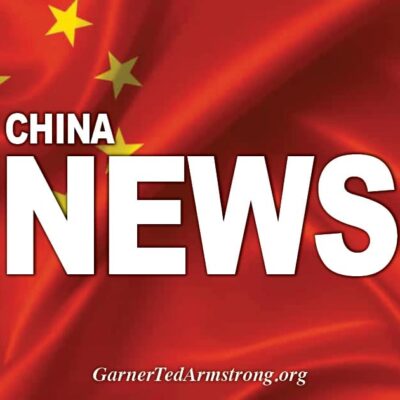SEOUL — While North Korean leader Kim Jong Un emphasized his eagerness to denuclearize at a joint press conference with South Korean President Moon Jae-in in Pyongyang on Sept. 19, details of exactly what steps would be taken were limited and no clear measures to rebuild trust with Washington were mentioned.
Kim told the press that he will make efforts to turn the Korean Peninsula into “a land of peace without nuclear weapons or nuclear threats.” As roaring applause rose from the audience, Kim looked around and joined in the clapping with apparent satisfaction.
Earlier in April when he met with Moon in Panmunjom, on the border between the North and South, Kim did not mention denuclearization directly at the press conference. Although the Panmunjom Declaration referred to “complete denuclearization,” its omission from Kim’s speech at the news conference led some observers to believe the North Korean leader was not serious about getting rid of his nuclear weapons and facilities.
This time, he uttered the key word in front of TV cameras broadcasting his image and speech worldwide. Kim succeeded in presenting his position of promoting denuclearization, and is expected to receive positive responses from the international community.
However, denuclearization on the Korean Peninsula had already been agreed upon — not only between Pyongyang and Seoul, but between Pyongyang and Washington. The focus of attention this time, therefore, was how far Kim would go in proposing new detailed steps toward this goal. Another key point of the North-South summit was whether Kim would list the country’s nuclear weapons and facilities, which was of particular interest to the United States.
The joint declaration from the latest summit states that North Korea agrees to permanently dismantle its missile engine test facility and missile launch tower in Dongchangri, in the northwestern part of the country, in the presence of experts from countries concerned. This step, however, is considered almost identical to a revelation made after Kim’s summit with U.S. President Donald Trump in June, in which the North Korean leader pledged that he would dismantle a missile engine test site.
Moreover, it is not clear if “experts from countries concerned” would actually be invited to witness the demolition work, if precedents serve as any guide. When North Korea blew up shafts leading to its underground nuclear test sites in Punggyeri in the northeast in May, the country did not invite American and South Korean experts as promised. Only a limited number of international reporters were allowed to witness the scene.
The joint declaration this time also says that North Korea intends to take more steps to dismantle its nuclear program, including permanently dismantling the Yongbyon nuclear facility. However, this promise is on the condition that the U.S. takes “corresponding measures.”
The Rodong Sinmun, the newspaper of the ruling Workers’ Party of Korea, stated in its Sept. 18 edition that the United States is “wholly responsible” for the bogged down state of denuclearization negotiations between Pyongyang and Washington. The government mouthpiece also expressed strong dissatisfaction with the United States for demanding that North Korea denuclearize first.
Judging from what Kim told the joint press conference on Sept. 19, it is clear that North Korea wants to continue its dialogue policy, which began with the North-South summit in April and the U.S.-North Korea summit in June. This is because Pyongyang has judged it vital to have a stable international environment, along with active economic exchange with China and South Korea, if it is to focuses on building its economy.
However, the latest summit did not reveal how far North Korea is willing to go toward denuclearization. There was no mention of naming the nuclear weapons and facilities in the country, a vital first step for any meaningful process to get rid of a nuclear program.
Professor Kim Guen-sik of Kyungnam University, a South Korean specialist on North Korea, pointed out that Kim Jong Un “just repeated his existing position when it comes to the nuclear issue.”
But even then, the U.S. appeared to be positive about the outcome of the North-South summit.
“Kim Jong Un has agreed to allow Nuclear inspections, subject to final negotiations,” Trump tweeted after the announcement of the joint declaration on Sept. 19. “Also, North and South Korea will file a joint bid to host the 2032 Olympics. Very exciting!”
Since the joint declaration did not mention North Korea accepting “nuclear inspections,” the basis of President Trump’s tweet is unclear. The American leader apparently wants to play up this diplomatic achievement before the November U.S. Congressional midterm elections.
After the June summit between Trump and Kim, American administration officials became skeptical of Pyongyang’s commitment to denuclearization, resulting in negotiations hitting a wall. But Trump’s positive response to the latest development suggests that talks may now restart.
“What the United States needs to be looking for right now are genuine steps from the North Koreans that indicate a willingness to move the process forward,” Michael Fuchs, former U.S. deputy assistant secretary of state for East Asian and Pacific affairs, told CNN. “If North Korea is genuinely willing to close down Yongbyon and to allow in inspectors … those are just partial steps, but those are genuine steps forward.”
At the joint press conference on Sept. 19, President Moon emphasized the historic importance of South and North Korea agreeing on measures for denuclearization for the first time. “Complete denuclearization of the Korean peninsula is not far away,” he said. Meanwhile, Moon’s chief presidential spokesman Yoon Young-chan explained that the denuclearization process “has entered the implementation phase,” as North Korea indicated its intention to shutter the Yongbyon facility.
Both Washington and Seoul appear positive about the outcome of the latest summit. The denuclearization measures incorporated in the joint declaration, however, were fairly limited. The declaration focused on preventing the production of “future nukes” by getting rid of means to develop new nuclear weapons, but did not say what will be done with existing weapons — a point the United States is demanding North Korea clarify.
Yoon told reporters that the issue of existing weapons is something Washington and Pyongyang need to discuss. He added that President Moon will report to President Trump in their Sept. 24 meeting “information that has not been revealed so far,” suggesting that Kim Jong Un also indicated other new measures concerning nuclear weapons.
According to South Korea, the two Koreas hope that inviting international observers to the demolition of the missile engine test facility in Dongchangri will spur negotiations between Washington and Pyongyang.
The Pyongyang Press Corps, which covered the summit, reported that Chung Eui-yong, director of the South Korean national security office who accompanied Moon to Pyongyang, told reporters that North Korea agreed to the “observation” of the demolition process by the international community, including the United States.
The definition of “observation” for North Korea could possibly be less intensive than the inspections or verifications considered necessary by the international community. Still, Chung pointed out that such a step “would help ease the international community’s distrust of North Korea for only seeming to take steps toward denuclearization for show.”
(Japanese original by Chiharu Shibue and Akiko Horiyama, Seoul Bureau; and Atsushi Iwasa, Foreign News Department)
Source: https://mainichi.jp/english/articles/20180920/p2a/00m/0na/024000c
[Disclaimer]








